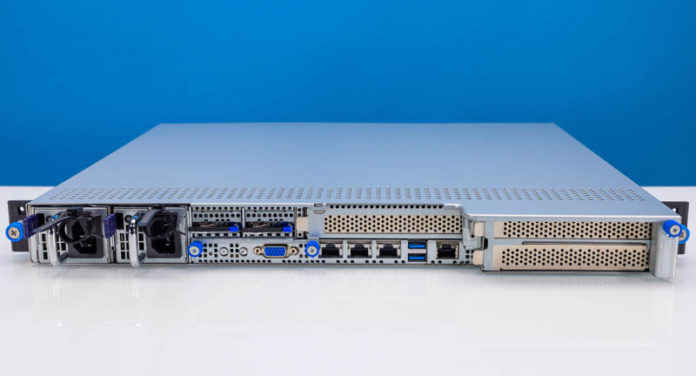
This is a review that we have waited over three quarters to publish. Ever since we saw the ASUS EG500-E11 at SC22 this has been high on our list of servers to take a look at. This is a short-depth 1U front I/O server for 4th Gen Intel Xeon Scalable processors. In our review, we are going to show why it is one we have been anticipating since November 2022. As a quick note, we are doing this review very early in the release cycle.
ASUS EG500-E11 External Hardware Overview
The server is a 1U system, but it looks very different from traditional 1U servers you may have seen. One side has two 2.5″ NVMe bays but instead of being the front of the system, it is actually the rear with a large fan array.
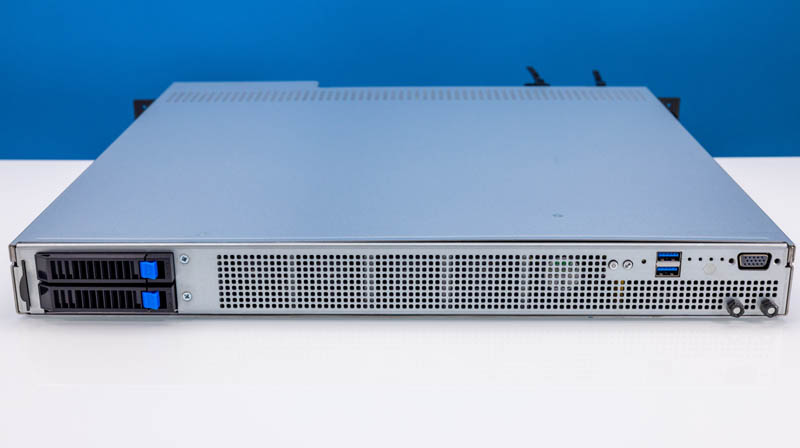
There are still two USB 3 ports and a VGA port along with things like status LEDs and the power button, but those are designed to be pointed to the rear of the rack.
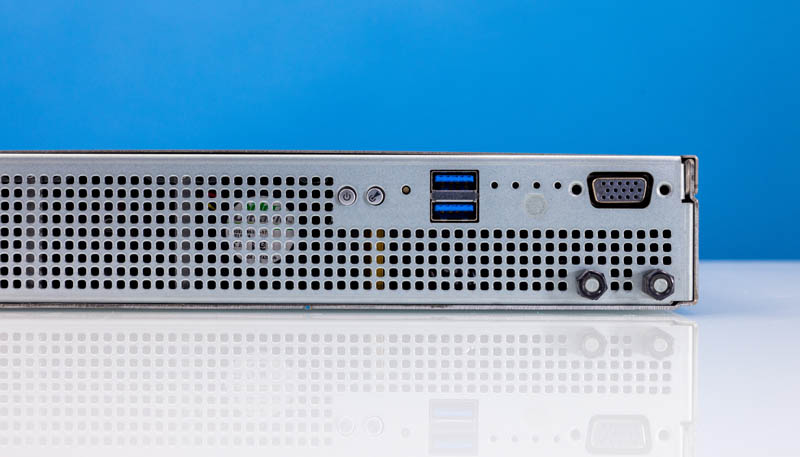
The two NVMe bays still give us some rear storage.
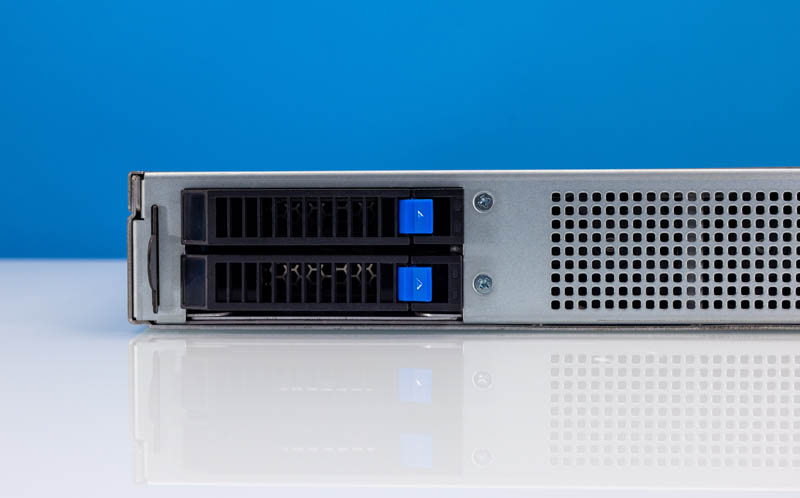
Here is a Samsung NVMe SSD in the trays.
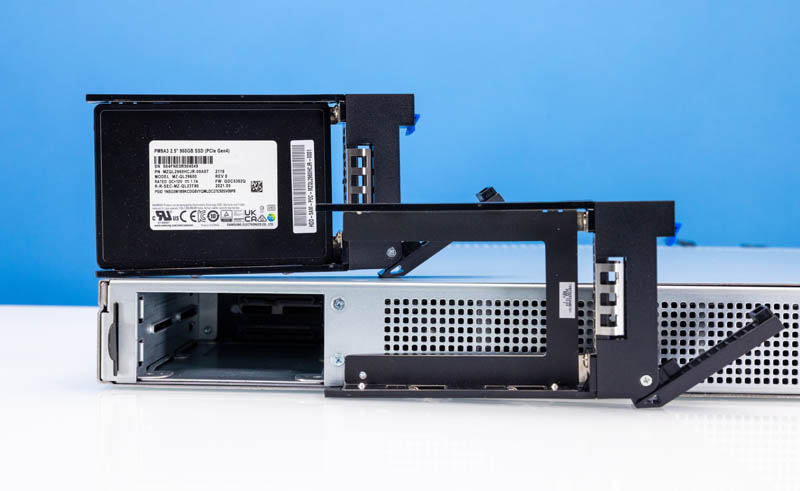
The more exciting part is clearly the front of the chassis. This is a front I/O server and it shows.
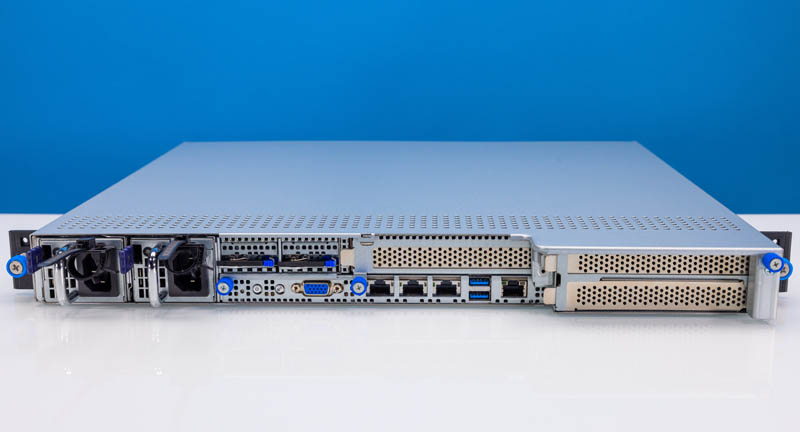
The first feature we see is a pair of power supplies.
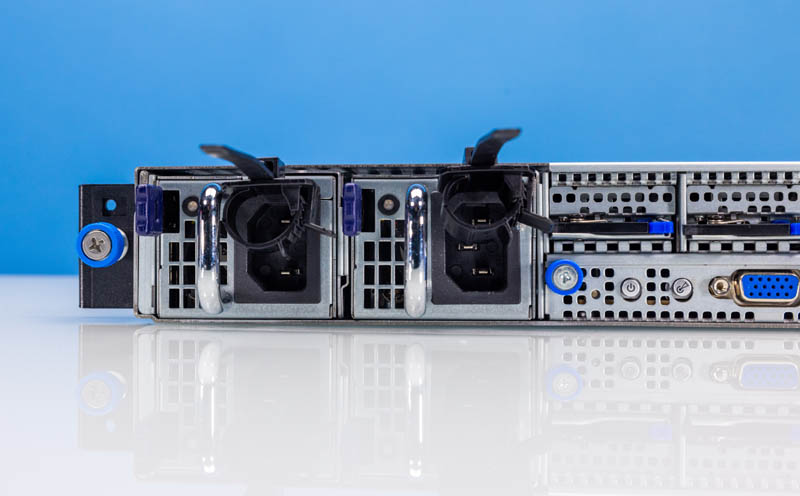
These are 650W redundant power supplies on the left side of the chassis.
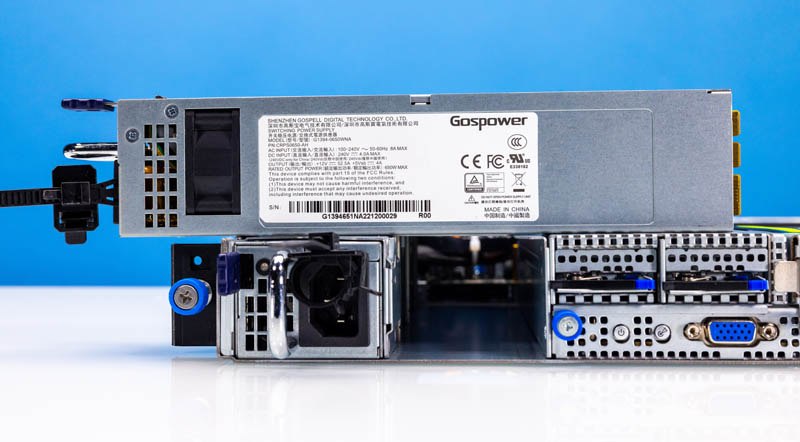
In the center, we get a number of features. Those include two E1.S drive bays, the main I/O, and a full height PCIe riser.

One area where we hope ASUS improves on with the full production units is labeling. A great example of why is the rear I/O. Features like the VGA port, two USB 3 ports, and power button are fairly obvious to most folks familiar with computers. The four ports that look like RJ45 ports are probably less obvious. We originally hooked these up incorrectly because we did not have a manual nor labels on the motherboard. The first port on the left is the IPMI port. The next two ports are 10Gbase-T ports. 10GbE connectivity is powered by the Intel X710-T2 onboard. The final port all by itself across a gap of USB ports is a console port. These need to be labeled.
The E1.S bays are a modern feature that we like to see in servers. You can learn more about E1 and E3 EDSFF taking over M.2 and 2.5 in SSDs here. SSD vendors can build drives that have better cooling, higher power/ performance, and that are hot-swappable making E1.S a more modern way to fit a slender drive into a system. ASUS ahs little drive caddies for these bays.
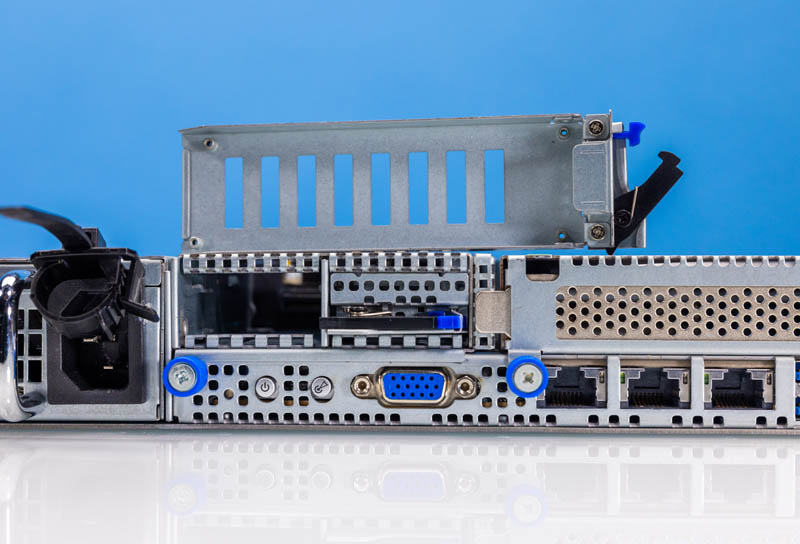
The left side has two PCIe full-height slots.
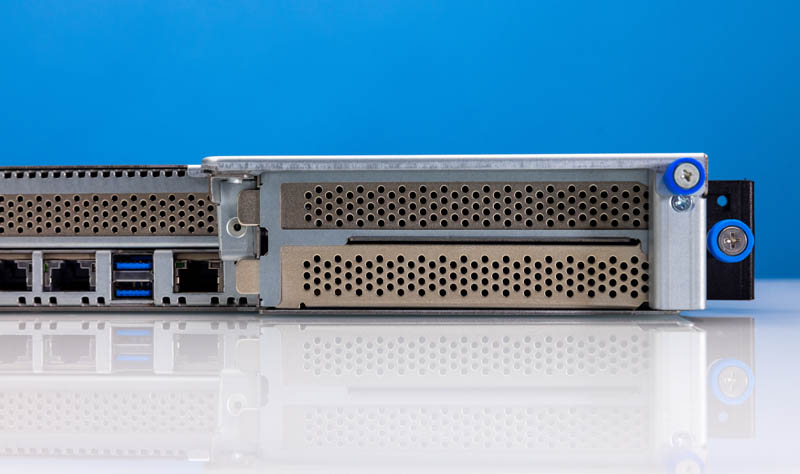
Next, let us get inside the system to see how it works.
